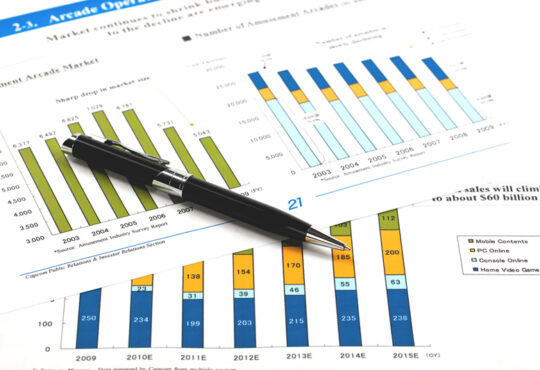
Asian Americans and Pacific Islanders in the United States are somewhat more optimistic than the overall adult population about their personal finances, but recent polling shows the outlook isn’t quite as sunny when it comes to keeping up with household expenses or unexpected medical costs.
A new poll from AAPI Data and The Associated Press-NORC Center for Public Affairs Research finds that 62% of U.S. Asians and Pacific Islanders say their household’s financial situation is good, slightly higher than the 54% of all U.S. adults who said that in an October AP-NORC poll. But only about one-quarter of Asian American and Pacific Islander adults are extremely or very confident they would be able to pay for a sudden medical expense. That is in sync with 26% of U.S. adults overall. Meanwhile, 4 in 10 are “not very” or “not at all” confident.
When it comes to the ability to maintain household expenses, only 3 in 10 AAPI adults are highly confident they can do so. An additional 46% are “somewhat confident” and 23% have “little to no confidence.”
People are also reading…
Stan Kilpatrick, a 65-year-old Republican in Altadena, California, runs a limo service. His client base, which includes the University of Southern California, has gone down because more events and meetings with guest speakers and groups are happening virtually. Meanwhile, the cost of auto insurance and fuel continues to rise.
“Much of the money that I was saving for retirement has gone into the day-to-day expenses as the business has gone down,” said Kilpatrick, who is half-Chinese. He also has a 23-year-old daughter living at home and is “absolutely terrified because of what things cost right now. I feel for her because if you’re just starting out, it’s like you really are stuck in the land of the roommate.”
He is somewhat confident he could weather an unforeseen payment like a health-related need. But that is only because of the health insurance coverage he has as an Army veteran.
Karthick Ramakrishnan, a public policy professor at the University of California, Riverside and founder of AAPI Data, said concerns about health costs and medical debt are clearly high priorities in the Asian American and Pacific Islander community. There are more multi-generational AAPI households compared to the U.S. average, and these households are more likely to include foreign-born grandparents who don’t qualify for Medicare.
The weight of medical costs is emotional too, Ramakrishnan said.
“There is just the sense of familial obligation that tends to be fairly high in many Asian, Asian American cultures,” he said. “You look at a population that on average has higher incomes, but they’re not much more likely than the U.S. average to say that they’ll have enough savings for retirement — 22% versus 18%.”
When it comes to the nation’s economy as a whole, 65% of AAPI adults characterize it as at least somewhat poor. That aligns with 69% of the general U.S. adult population in a December AP-NORC poll. Furthermore, about 4 in 10 AAPI adults believe the economy will only get worse in the next year. Only about 2 in 10 think it will actually improve. But they mostly follow party lines when it comes to how President Joe Biden is handling the economy, inflation, jobs and student debt.
About half identified as Democrats, about one-quarter as Republicans and 2 in 10 as independents.
About 4 in 10 AAPI adults expressed approval with how Biden is handling the economy. But only 34% of U.S. adults approve of his performance on the economy. A majority of AAPI adults — 55% — approve of how Biden is handling jobs. Only 32% approve of how he is dealing with cost inflation. On student debt, 45% approve of him. That is on par with the 41% of U.S. adults overall who approved in the October poll.
Audrey Jackson-Post, 34, of Kirksville, Missouri, said her household’s financial situation has been difficult. Sometimes she stresses out over paying basic expenses. She and her husband recently fell short of buying a house. Jackson-Post, who is part Korean, only has part-time hours in the kitchen of the school where her husband works in the classroom full time.
A Democrat, Jackson-Post is not sure if she will vote for Biden in the presidential election.
“Since he’s been in office, it’s been harder for everyone to get jobs. It just feels like everything’s harder,” she said.
James Bae, 49 and a married business consultant in Temecula, California, said his household income is lower compared to a year ago. The number of companies willing to pay for his services fluctuates with the state of the economy. Meanwhile, household expenses have risen. Bae, who is Korean American and unaffiliated with a political party, recently went back to school for his Ph.D. Plus, he and his wife have two teenage sons.
At the same time, he believes the country’s economy is moving in the right direction. He pointed to the Biden administration trying to foster more technology and manufacturing in the U.S. as well as financial assistance during the pandemic. He also acknowledges inflation is “a tough needle to thread.”
“If I had the trade-off with the state of employment and the way the economy is, I’d rather have the problems we have now with inflation rather than a recession,” Bae said.
States Most Impacted by Rising Heating Costs This Winter
States Most Impacted by Rising Heating Costs This Winter
Photo Credit: Pixel-Shot / Shutterstock
As the height of winter approaches in the United States and temperatures continue to drop across the country, many Americans are turning their focus to the high prices of household utilities—namely household heating fuels. On average, nearly half of residential energy consumption in the U.S. is attributable to space heating, and 85% of U.S. adults report that their utility costs have increased in recent years. While heating prices have come down in recent months compared to their peak last year, Americans are still projected to spend nearly 30% more on utilities this winter than before the pandemic.
Residential Winter Heating Fuel Prices Over Time
Recent inflation has impacted all major residential heating fuels. Image Credit: Upgraded Points
Despite the projected dip in utility prices this winter, the overall burden on American wallets remains significant. While winter electricity prices had been on a steady rise since the early 2000s, they distinctly shot up during the pandemic—rising 18% from winter 2019–2020 to winter 2022–2023. And with natural gas—the most common winter heating fuel source in the U.S.—price inflation was even more dramatic. After remaining low since 2010 thanks to new extraction technologies, natural gas prices have risen nearly 27% since the winter of 2019–2020. Winter propane and heating oil prices also followed the trend—rising 23% and 39% during the same time period, respectively.
Geographical Differences in Primary Household Heating Fuels
While over 87% of households primarily use natural gas or electricity to heat their homes, northern states often rely on propane or heating oil. Image Credit: Upgraded Points
In the United States, the use of different heating fuels varies significantly based on location. Nationally, natural gas is the predominant heating fuel, used as the primary source in over 60 million homes (46% of the total). Compared to other heating fuels, natural gas has the least geographic variation, with at least a quarter of households relying on it as their primary heating source in all but seven states.
Electricity ranks as the second most common fuel for residential heating, serving as the primary source for approximately 54 million homes, mainly concentrated in the South and Pacific Northwest where heating demands are lower. For instance, in Florida, over 90% of homes primarily use electricity for heating, while in northern states, this number typically falls below 20%. Conversely, propane and heating oil are more prevalent in regions with high heating demands, but where rural customers lack access to utility gas lines, as is the case in parts of the Midwest and Northeast.
Differences in fuels, prices, and climate create large regional variation in household utility expenditures, especially during the winter months. According to forecasts from the U.S. Energy Information Administration, residents of New Hampshire and Maine—who primarily rely on heating oil to heat their homes—are projected to spend 45.4% and 44.4% more on monthly household utility costs this winter than they did during the winter of 2019–2020. Similarly, some areas in the South, like Louisiana (+37.8%) and Florida (+36.6%) are expected to receive significantly higher utility bills this winter. Conversely, the remote states of Alaska (-11.2%) and Hawaii (-6.5%) already have relatively high utility costs during the winter months, and are actually forecasted to experience smaller average monthly utility bills this year.
Below is a complete breakdown of all 50 states. The research was conducted by Upgraded Points using the latest data from the U.S. Energy Information Administration. For more details on how the analysis was conducted, refer to the methodology below.
15. Nebraska
- Change in monthly winter household utility costs: +27.8%
- Average monthly winter household utility costs (2023–2024, projected): $244
- Average monthly winter household utility costs (2019–2020): $191
- Primary household heating fuel source: Natural gas
14. Indiana
- Change in monthly winter household utility costs: +28.4%
- Average monthly winter household utility costs (2023–2024, projected): $272
- Average monthly winter household utility costs (2019–2020): $212
- Primary household heating fuel source: Natural gas
13. Colorado
- Change in monthly winter household utility costs: +29.0%
- Average monthly winter household utility costs (2023–2024, projected): $204
- Average monthly winter household utility costs (2019–2020): $158
- Primary household heating fuel source: Natural gas
12. New York
- Change in monthly winter household utility costs: +29.8%
- Average monthly winter household utility costs (2023–2024, projected): $356
- Average monthly winter household utility costs (2019–2020): $274
- Primary household heating fuel source: Natural gas
11. Connecticut
- Change in monthly winter household utility costs: +29.8%
- Average monthly winter household utility costs (2023–2024, projected): $506
- Average monthly winter household utility costs (2019–2020): $389
- Primary household heating fuel source: Heating oil
10. Texas
- Change in monthly winter household utility costs: +30.6%
- Average monthly winter household utility costs (2023–2024, projected): $220
- Average monthly winter household utility costs (2019–2020): $168
- Primary household heating fuel source: Electricity
9. Massachusetts
- Change in monthly winter household utility costs: +31.0%
- Average monthly winter household utility costs (2023–2024, projected): $443
- Average monthly winter household utility costs (2019–2020): $338
- Primary household heating fuel source: Natural gas
8. Kansas
- Change in monthly winter household utility costs: +31.4%
- Average monthly winter household utility costs (2023–2024, projected): $267
- Average monthly winter household utility costs (2019–2020): $203
- Primary household heating fuel source: Natural gas
7. Oklahoma
- Change in monthly winter household utility costs: +32.2%
- Average monthly winter household utility costs (2023–2024, projected): $246
- Average monthly winter household utility costs (2019–2020): $186
- Primary household heating fuel source: Natural gas
6. Illinois
- Change in monthly winter household utility costs: +32.4%
- Average monthly winter household utility costs (2023–2024, projected): $259
- Average monthly winter household utility costs (2019–2020): $195
- Primary household heating fuel source: Natural gas
5. Pennsylvania
- Change in monthly winter household utility costs: +32.5%
- Average monthly winter household utility costs (2023–2024, projected): $364
- Average monthly winter household utility costs (2019–2020): $274
- Primary household heating fuel source: Natural gas
4. Florida
- Change in monthly winter household utility costs: +36.6%
- Average monthly winter household utility costs (2023–2024, projected): $188
- Average monthly winter household utility costs (2019–2020): $137
- Primary household heating fuel source: Electricity
3. Louisiana
- Change in monthly winter household utility costs: +37.8%
- Average monthly winter household utility costs (2023–2024, projected): $211
- Average monthly winter household utility costs (2019–2020): $153
- Primary household heating fuel source: Electricity
2. Maine
- Change in monthly winter household utility costs: +44.4%
- Average monthly winter household utility costs (2023–2024, projected): $509
- Average monthly winter household utility costs (2019–2020): $353
- Primary household heating fuel source: Heating oil
1. New Hampshire
- Change in monthly winter household utility costs: +45.4%
- Average monthly winter household utility costs (2023–2024, projected): $553
- Average monthly winter household utility costs (2019–2020): $380
- Primary household heating fuel source: Heating oil
Methodology
Photo Credit: Pixel-Shot / Shutterstock
To find the locations most impacted by rising heating costs this winter, researchers at Upgraded Points analyzed the latest data from the U.S. Energy Information Administration’s (EIA) Short-Term Energy Outlook, Natural Gas data, Electricity data, Propane data, and Petroleum & Other Liquids data. The researchers ranked states according to the change in monthly winter household utility costs from winter 2019–2020 to winter 2023–2024. For the purposes of this analysis, winter was considered to be December through February and the four most common heating fuel utilities (natural gas, electricity, propane, and heating oil) were considered in utility cost calculations. Household utility costs were calculated using regional energy data and consumption patterns, as well as the EIA’s Short-Term Energy Outlook projections.
For complete results, see States Most Impacted by Rising Heating Costs This Winter on Upgraded Points.






